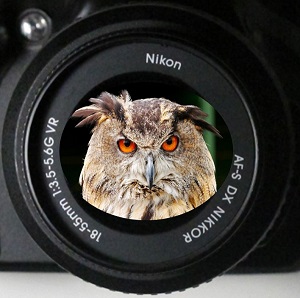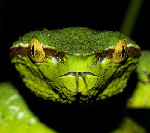| [ Home ] [ News ] [ Products ] [ Services ] [ Night Hunting] | ||
 |
The Predator's Eye |
|
The Predator's EyeWelcome to The Predator’s Eye—your source of information about infrared technology and its applications. Why do we call this site The Predator’s
Eye? |
||
What is Infrared, Exactly?Sometimes referred to by its initials, IR, infrared radiation is electromagnetic radiation, more commonly described simply as heat. Because its waves are shorter than those of visible light, it cannot be seen with the unaided eye. Its name comes from the Latin words meaning "below red" because its waves are shorter than (below) red which is visible light. Infrared light has a range of wavelengths. This is similar to visible light which has wavelengths that vary from red to violet. IR is divided by different group definations into near-IR or short wave IR (0.7- 2.5 to 5 μm in wavelength), mid-IR or medium wave-IR, (2.5 to 5 - 25 to 50μm) and far-IR or long wave-IR (25 to 50- 1000 μm). "Near infrared" light is closest in wavelength to visible light and the major part of warming sunlingt and "far infrared" is closer to the microwave region of the electromagnetic spectrum. The longer, far infrared wavelengths are about the size of a pin head and the shorter, near infrared ones are microscopic. Near infrared waves generate heat and are used for greater efficiant heating. They can be felt when they touch your skin or anything near you. The far infrared waves on the other hand do not generate heat. These are the waves used in many consumer devices like TV remote controls. As you read throughout this site, there are many products that are able to detect IR and make life easier, safer and more fun! IR cameras, for example are able to detect heat signatures and are used by first responders to find lost hikers or to determine how many people are in a building where hostages are being held. Every physical object (even a cold one like icicles) emits some heat. IR cameras are able to measure heat coming from an object (and even different parts of the same object) and can assign different colors to those areas based on the amount of IR detected. The result is dramatic and gives us a visual advantage that some other creatures are born with—the ability to see in the dark. |
|
|
|
Some animals are born with IR detectors which help them hunt their pray. For instance, snakes in the pit viper family have sensors in their eyes that are able to detect warm blooded animals at night. Talk about a predatory advantage! For more information, see: http://science.hq.nasa.gov/ http://encyclopedia.kids.net.au/ |
 |
|
Our MissionDiscover the many aspects of infrared and thermal imaging and that will help us make better use of our resources.
|
|
|
Contact InformationPlease contact us to offer stories, information, and different ways that may help share information about thermal imaging.
|
|
|
|
|
||
Send mail to ThePredatorsEye@gmail.com with
questions or comments about this web site.
|
||

